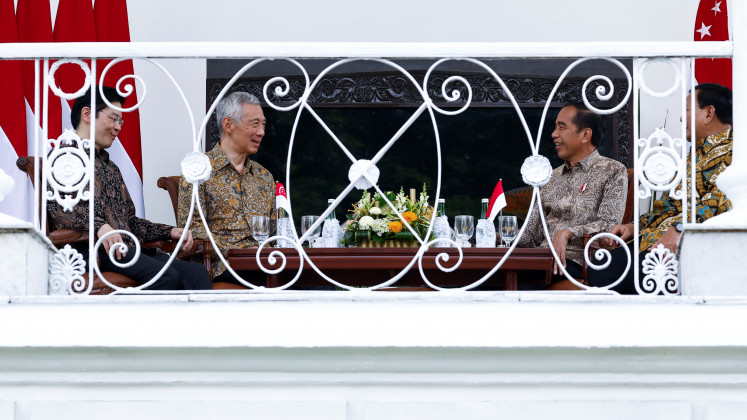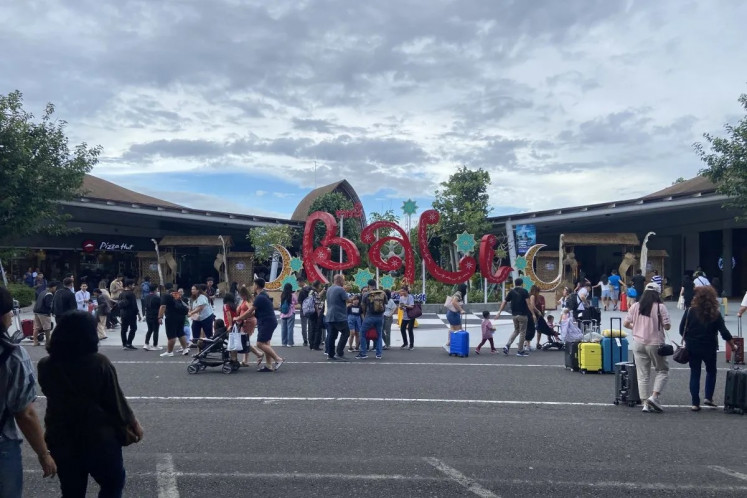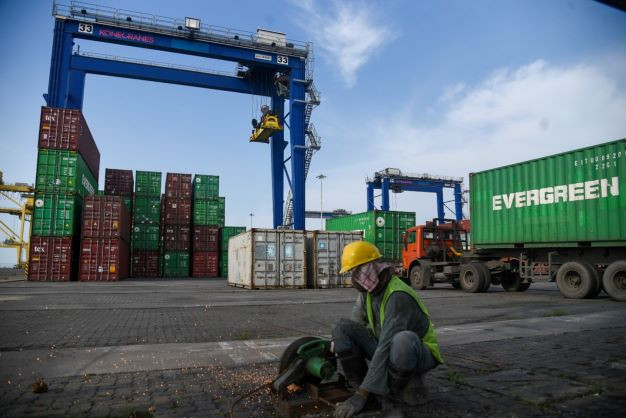Fishermen at greater risk of HIV
With over 17,000 islands and 755 ports, Indonesia's maritime and fishing industries are a major source of national income
Change Size

Indonesia has over 425,000 marine fishermen (estimated by Graham Hugo in 2001), and over five million "fisherfolk" involved in all aspects of Indonesia's fishing industry (estimated by Kissling et al. in 2005).
Balinese researcher Made Setiawan recently concluded a study among fishermen based at Benoa Port in Bali -- almost all of whom are Javanese -- to investigate the social factors and dynamics that put them at risk for HIV/AIDS.
True to the stereotype of the drunken sailor, he found that with a combination of lump sum per-trip cash payments, advances and bonuses, most are unable to save any money or aspire to a better life.
Risking injury or death on a daily basis at sea, living away from wives and families in a different culture, and treated as migrant workers in their own country, they turn to drink, pornography, and brothels for their entertainment during their short breaks on land in Bali.
Made, who received his doctorate in Public Health from the University of Illinois in Chicago, based his findings on extensive observation and conversations with a wide variety of fisherfolk at the port and dorms, in addition to in-depth interviews with 29 crew members from small fishing boats (which stay at sea for two weeks per trip, and have a crew size of about eight).
As he reports, the dynamics of risk are as hard to untangle as their fishing lines. On land, the fishermen regularly hold spontaneous or planned drinking parties. Those with cash in hand are "king for a day" and will treat any friends who happen to be around, based on a complex network of favors owed, promises of future credit, and enduring friendship bonds formed while facing peril at sea, or through risky collaboration in sales of stolen fish or illegal shark fins.
At the same time, charismatic fishermen or officers may influence their peers or underlings toward either safer or riskier practices. They may be a source of accurate health information and facilitate access to good services, or they may propagate harmful myths and promote dangerous self-treatment and ineffective preventive practices.
Use of prostitutes at Sanur brothels is popular. Condoms are not. Fishermen prefer preventive practices such as choosing clean and healthy-looking, or younger girls, taking antibiotics in advance, washing afterwards, or keeping themselves fit and strong, all of which make them feel relatively immune to sexually transmitted infections (STIs).
Not infrequently, fishermen may pay for one girl to share among a small group of friends, often fellow crew members or roommates working for different boats.
As Made says, even if fishermen form an intention to use condoms, in the inebriated heat of the moment, caution is generally thrown to the wind.
Often the sex workers suggest using condoms and even provide them (the government and local NGOs promote 100 percent condom use), but they have no power to enforce usage; the men will just choose a different girl. It is not consistent with their masculine cultural identity to let women call the shots.
While on board, on their journey home from fishing areas, some fishermen make and insert crudely crafted, rounded plastic or glass implants under the skin of their own or their friends' penises, using any kind of available sharpened blade and whatever antiseptic they can find.
Painful infections often result, but even if all goes well, the fishermen generally will rush to try out the new accessories on arrival on land, before the healing is complete. Poorly healed penile wounds, and excessive vaginal abrasion caused by the implants, clearly increase the chances of STI transmission, including HIV.
While the prevalence of HIV/AIDS in Indonesia's adult population is estimated 0.1 percent (www.unaids.org), in certain groups the rate is high, especially among injecting drug users (approximately 41 percent), their sexual partners (14 percent), and among transvestites/transsexuals (waria) (14 percent) (National AIDS Commission/KPA, 2006).
Among female sex workers in Bali, approximately one in 10 are estimated to have HIV (Bali AIDS Commission/KPAD, 2007). Many Indonesian fishermen also work on larger boats which dock at international ports where HIV infection rates among prostitutes are even higher, such as Thailand and South Africa.
Clearly the fishermen are at high risk of infection, and with their regular visits home to wives and girlfriends in Java and elsewhere, they form one potential bridge for STIs and HIV to Indonesia's general population, as do other clients of sex workers, such as truck drivers.
Yet despite serious high risk factors and the large number of fishermen in Indonesia, few efforts have so far been made to study and devise effective, accessible and acceptable intervention programs, which clearly need to take into account social, cultural, and economic contexts.
One thing that Made's research has shown clearly is that knowing about the dangers of HIV, and having access to condoms, is not enough to make someone safer, if their peer group, their social context or their cultural beliefs are not supportive.









